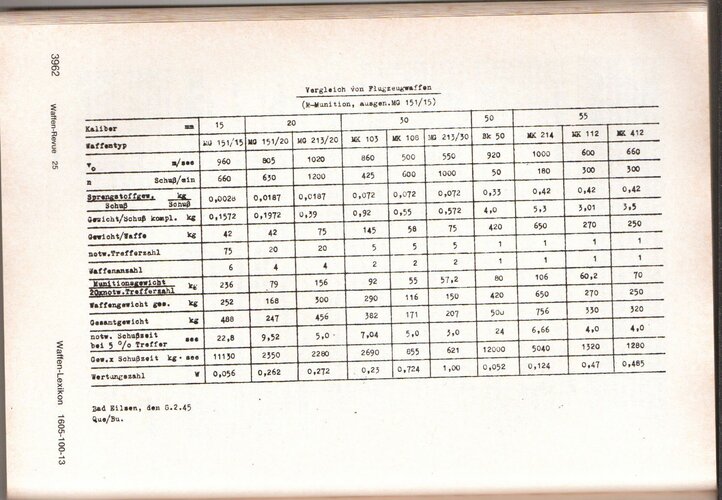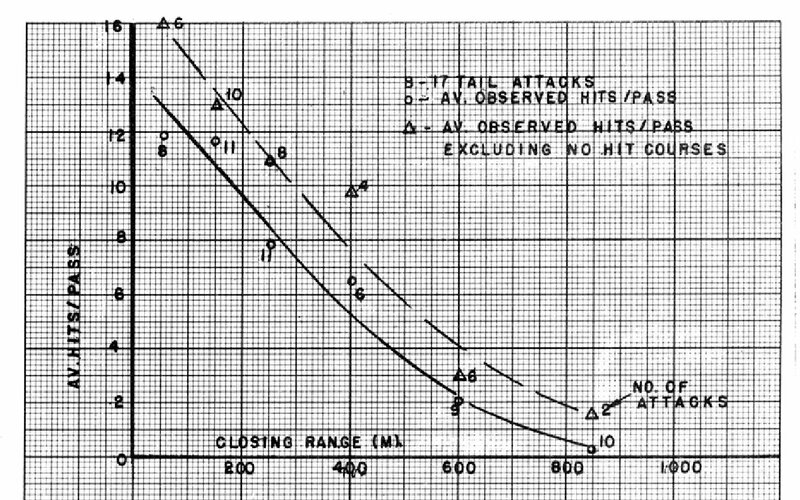Hi Tomo,
Think that we can agree that a Soviet fighter, Bf 109 or P-39 will be hard pressed to carry aloft more than one 30mm cannon until/unless the major power increase happens. IMO that cannon better be as powerful as it is practically possible.
For comparison, the Fw 190A-8's armament weight could be broken down as follows:
168 kg - 4 x MG 151/20
167 kg - 880 rounds 20 mm ammunition
34 kg - 2 x MG 131
74 kg - 950 rounds 13 mm ammunition
-------
443 kg
The Me 109G-6/R6:
42 kg - 1 x MG 151/20 nose gun
43 kg - 200 rounds 20 mm ammunition for nose gun
84 kg - 2 x MG 151/20 wing guns
58 kg - 270 rounds 20 mm ammunition
34 kg - 2 x MG 131
47 kg - 600 rounds 13 mm ammunition
-------
308 kg
The Me 109G-6/U4:
60 kg - 1 x MK 108
48 kg - 65 rounds 30 mm ammunition
34 kg - 2 x MG 131
47 kg - 600 rounds 13 mm ammunition
-------
189 kg
The Me 109G-6:
42 kg - 1 x MG 151/20
43 kg - 200 rounds 20 mm ammunition
34 kg - 2 x MG 131
47 kg - 600 rounds 13 mm ammunition
-------
166 kg
Considering that the Me 109G-6/R6 was perceived as too heavy for air-to-air combat, while the /U4 modification doesn't seem to have raised any objections, we can probably say that for the Me 109, 308 kg of armament weight is too mich, but 189 kg is OK. I'll set the limit at a nice round 200 kg.
This gives us the following options:
1 x MK 103 with 60 rounds: 200 kg, 425 rpm
1 x Tomo Gun with 124 rounds: 200 kg, 503 rpm
2 x MK 108 with 76 rounds per gun: 200 kg, 1200 rpm
So the MK 108 battery has the highest rate of fire by far, and the biggest round count. Admittedly, it again requires wing guns.
In this case, I'd be tempted to take the Tomo Gun because having centreline armament is a significant advantage, even if the slow rate of fire is a bit inconvenient. Considering that historically, the Me 109 seems to have been used more often to cover the bomber-killing Fw 190s against escort fighters than as a bomber killer, maybe I would prefer a MK 108 with a smaller mine shell so that a higher rate of fire is possible at the increased muzzle velocity that seems inevitable if this thread is ever to go anywhere! ;-)
Usage of silver is in the crankshaft bearings, S/C was away from it. Someone still needs to make the GM-1 system and the mixture it uses. If used, it can also be added to a 2-stage engine for even better performance at altitude.
Usage of silver is from Calum's book, I didn't actually know that before looking it up

Calum's book also has a description of the production and logistics of GM-1, so that was pretty much covered. I'm not quite sure why it wasn't used at a larger scale to fight the USAAF though - maybe it's in the book, I only read it once so far, and there are a lot of details that I couldn't commit to memory on the first go.
You can use it with a two-stage supercharger, but you'll be alone at the altitudes where it's useful, and you'd probably need a spacesuit as well! :-D Even the bog-standard Gustav could get up to around 13 km with GM-1 only, and GM-1 could only be used above full throttle height. Accordingly, with a two-stage supercharger that would not have yielded much of a useful operational envelope.
Regards,
Henning (HoHun)


